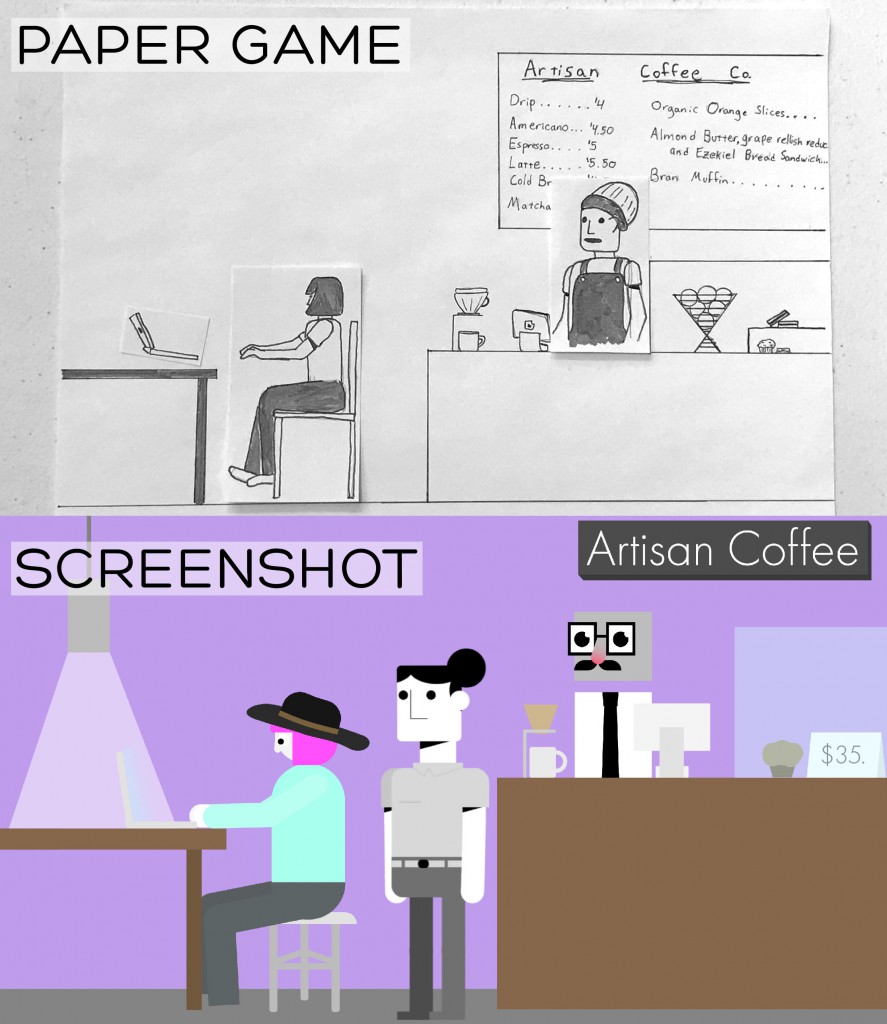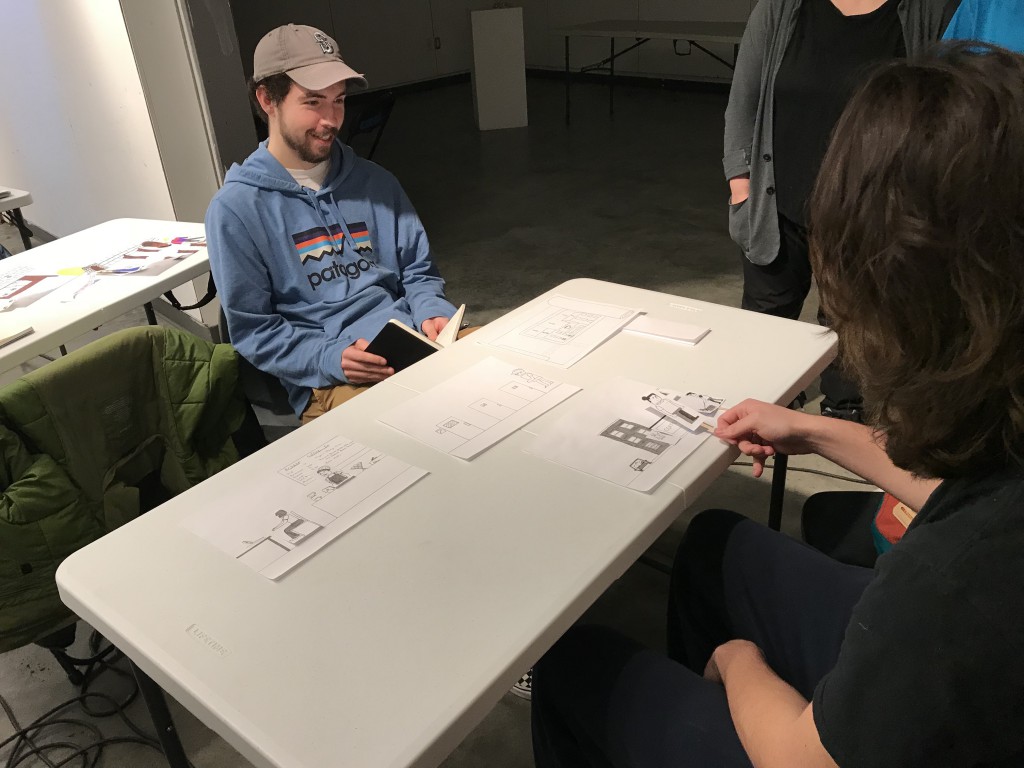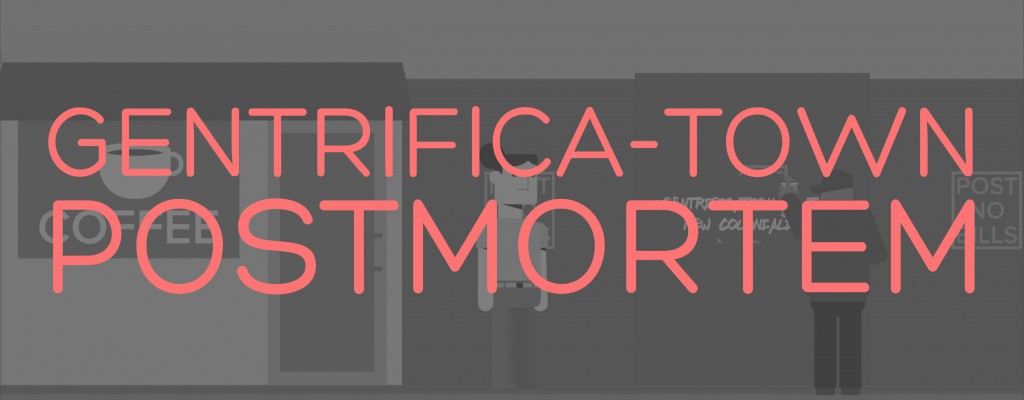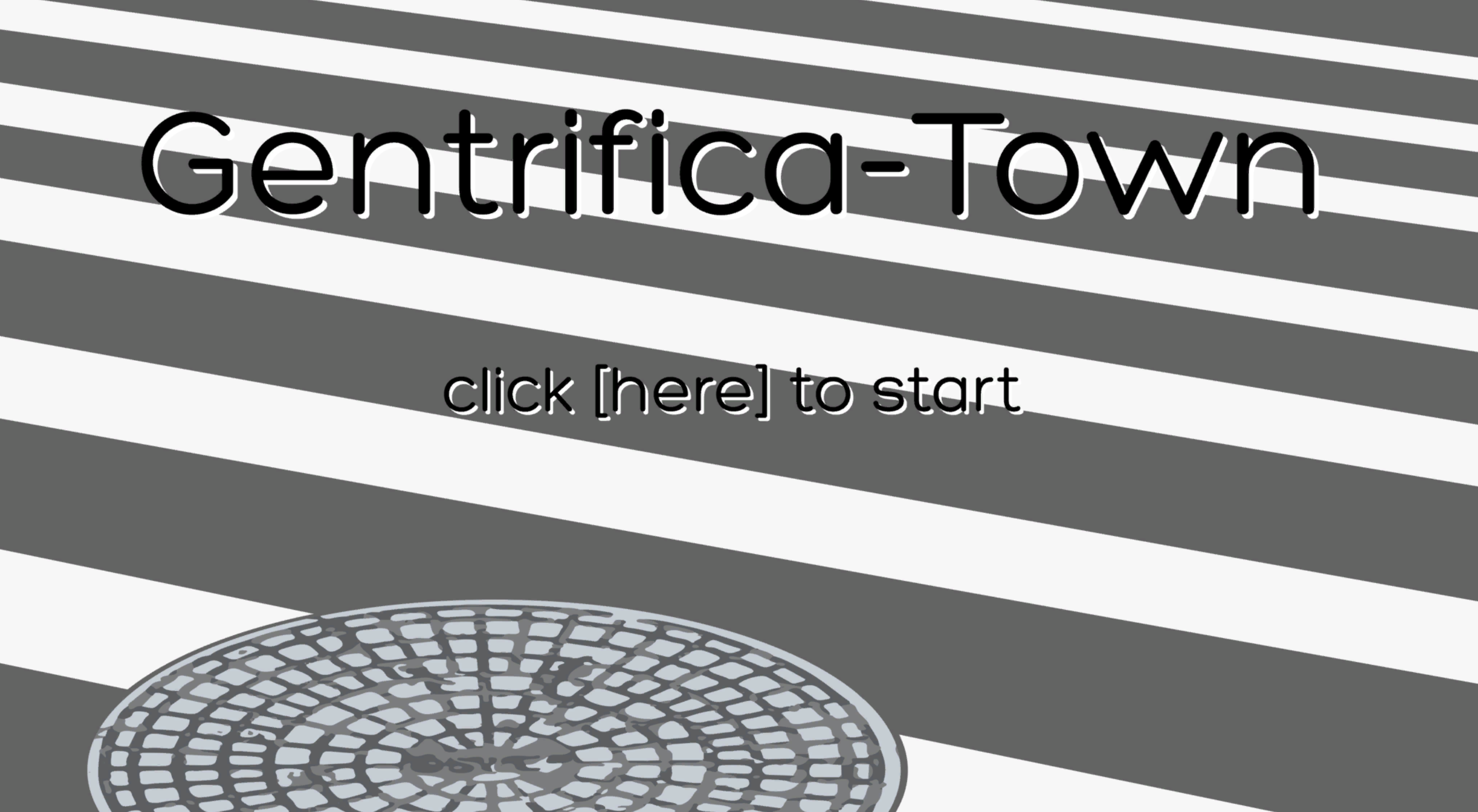What aspects of your game changed the most over the semester?
The role of the player changed the most throughout the game. In fact, I would say that I’m still not really sure what the role of the player would be in the fully developed story.
I originally wanted the game to be broken out into three different acts and for the player to be controlling a different character in each act.
My plan from the beginning was to make a game about gentrification.
I wanted the first act to be about a young, upper-middle-class, recent college grad moving into a gentrifying neighborhood and having to face-off against the unfamiliar territory and the people who already live there.
The second act would be from the perspective of a younger, high-school-aged kid from a working-class family whose been living in that same neighborhood for several generations, and who now has to handle the changes occurring in the neighborhood (with those changes being caused by gentrification).
The third act would probably involve those two groups coming together and realizing that, while initially, they may have seen each other as enemies – both fighting for the same area – they actually have a common enemy. They need to come together to form a strong community to protect everyone who lives there. They would need to fight predatory real estate brokers and get laws passed to save the community.
I ended up simplifying the story considerably. I chose to limit the story to only being from the perspective of the college-grad who has just moved to the city and is looking for an apartment. I’m still not sure if that change is final or if it will just be temporary for this class.

What parts of the game stayed pretty much true to the original idea?
I went into building the idea with a strong and clear idea of what I wanted the theme of the game to be about and what I wanted the art and animations to look like. I think, coming out the other side, those things mostly seemed to stay unchanged.

How could you have used your paper model to save time?
I think the paper game could have been a good tool to lock in the game story early on and quickly test different ways of playing the game.
For example, I could have used it to decide between playing the game in three acts, with three different characters, as I mentioned earlier on in the post, or I with just one main character. It would definitely have been helpful to have seen how players reacted to both versions of the game.
Although I do think that in order to get helpful reactions from players, both versions of the game would have to be developed pretty fully, which I don’t think we had time to do in this one semester class.
What surprised you about your abilities to make your game?
I was surprised at how well my art and animations fit with the game format. They stood out from the other games in my class. And I think they made for an interesting and engaging world for players to explore.
What was easier to do than you might have expected?
I would have to say that the character movement was easier to add than I expected.
I went into the class thinking we would have to code in physics rules and ease in and out player movements so that they would come across as fluid.
There was certainly some coding involved but ultimately, Unity seemed to take care of most of that for us – which was certainly appreciated.
What was harder?
The coding was much harder than I expected it to be. I knew it would be an integral part of the process, but I don’t think I understood how integral it would be. I was surprised to find that in order to perform a function that, I would have initially thought to be extremely simple (for example, adding in a sound effect), was in fact at least a little bit more complicated.
Pretty much everything at least needs at least some code attached to it – while I expected more things to be plug-and-play, or able to be dropped into the scene and be functional.
How important was time management on this project?
Time management was definitely an important aspect of the project. I would say especially when it came to the debugging process.
Often, I’d be able to follow along with the book’s example and 75 percent of the code would work for my game but then there would be another 25% where I’d have to adapt it to fit my game which almost always required some trial and error.
Especially given that these were problems with code that I was only learning as we went along. I was almost always able to get everything working but it would take some time, which I needed to be sure to budget out.
What would you have done / chosen to do differently?
In retrospect, I would have wanted to spend more time up-front working out my game story, and potentially testing it out on paper before I began playing it. I felt a bit like I was assembling my airplane in mid-air – by coming up with the game story as we went. I don’t think it ended up being as strong as it could have been if it was locked down ahead of time, and I wasn’t making creative decisions reactionarily.

A major caveat to that would be that I was really glad that we actually got to build a game of our own as we were going. I don’t know if it would be as satisfying if I left the class with a game concept and a paper prototype.
Also, without having built a game before I don’t think I would have been in a good position to know what game elements would be feasible and what wouldn’t.
Therefore, even if I end up starting over from scratch, I guess I’m glad that we did it this way. I would say that the important takeaway from the class was not necessarily the game file but was rather the knowledge of how to construct a game and how to go about building it. (Sorry if that sounded cheesy and cliché.)


